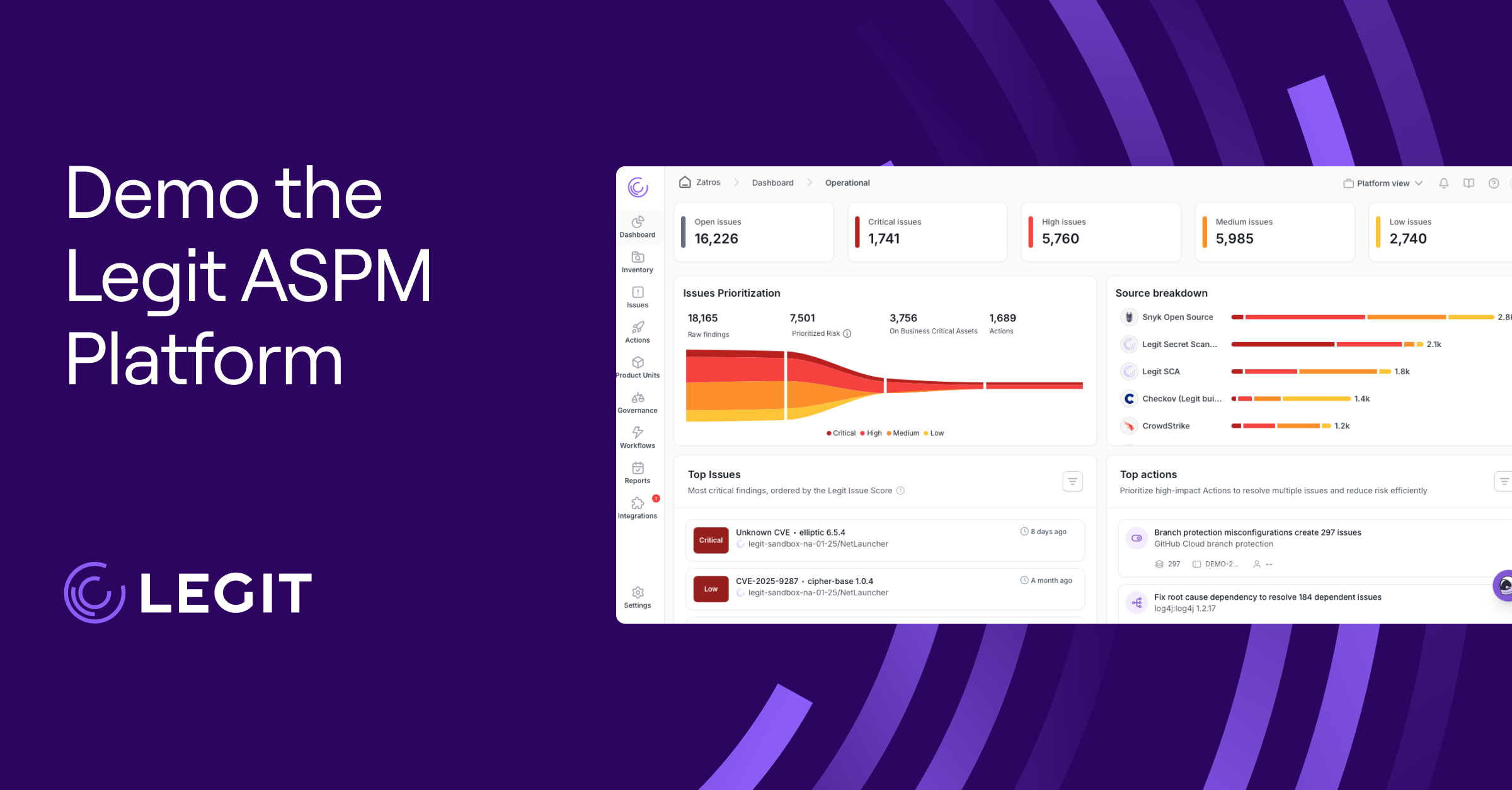Change is constant in software development, but not every change carries the same weight.
More than a simple tweak to a line of code, material changes in software development can impact an application’s architecture, security, performance, or compliance posture. And that may introduce new vulnerabilities and lead to regulatory or internal policy reviews.
In this guide, we’ll explain material changes, why they’re important, how to detect them, and how to manage them without slowing your development pipeline.
What Is a Material Change?
A material change is any significant update in the software development lifecycle (SDLC) that can introduce meaningful risk. This could involve changes to the codebase, underlying architecture, infrastructure, or how the system integrates with third-party tools.
These aren’t routine bug fixes or formatting adjustments. They’re the kind of updates that can alter how applications behave in ways that could affect user experience or trigger application security and compliance reviews.
Because of their impact, catching material changes isn’t always straightforward. They depend heavily on context—who made the change, where they made it, which part of the system it touches, and how it connects to business-critical workflows. Even reviewing a commit diff doesn’t always tell the full story. It’s not just about what was added or removed, but what that change means for software security in the bigger picture.
What Is a Material Code Change?
A material code change is a high-impact modification within the codebase that alters software—specifically, how it performs and how it protects itself. They’re meaningful changes that affect an application’s architecture or expose sensitive data. They can also introduce compliance gaps or alter an organization's overall security posture and software security profile.
The range of material code changes is broad. Adding new features, changing APIs, improving performance, or replacing a framework can all qualify. Security-focused updates also fall into this category, whether it’s shifting to a Zero Trust model or implementing stronger encryption. It could also involve improving detection mechanisms.
The challenge isn’t just spotting that a code change happened. It’s understanding when changing code introduces meaningful risk. Even a small decision to change the code for a backend service can ripple across the system, making it harder to maintain compliance or avoid vulnerabilities.
For example, when a developer updates third-party dependencies, the impact isn’t always obvious. Those updates can introduce security risks and unexpected behavior depending on how the dependency interacts with the rest of the system.
That’s why more organizations are adopting ASPM platforms to evaluate material changes in context, tracking them across the full software development lifecycle (SDLC). When these changes touch critical parts of the pipeline, they often relate to secure software development best practices, which emphasize early detection and automation to avoid costly gaps.
Why Do Material Changes Matter?
Material changes matter because they can introduce vulnerabilities or unintentionally expand the attack surface without leaving an obvious footprint. The issue isn’t just that these changes exist—it’s that traditional tools often fail to detect them.
A developer might update an API or configuration file in a way that changes how the system processes sensitive data. Even a small refactor can quietly disrupt authentication logic behind the scenes. Without proper visibility, teams are left guessing and hoping nothing slips through.
Material code changes don’t always show up in standard reviews, but they can silently derail compliance, introduce exploitable flaws, or cause system-wide regressions. Left undetected, these changes can delay releases or lead to audit failures.
That’s why proactive identification matters. Software engineering teams that recognize and evaluate material changes early before they hit production can avoid last-minute scrambles and build applications that are secure, stable, and scalable from the start.
Compliance Landscape for Material Changes
Many IT security and compliance frameworks strongly encourage teams to track, review, and document material changes, especially those made to code. Some even explicitly require it.
Here’s where these requirements come into play:
- FISMA (Federal Information Security Management Act): Under FISMA, federal agencies and contractors must assess the security impact of any code changes. That involves documenting, testing, and monitoring material changes as part of the agency’s information security program.
- NIST SP 800-53: This federal standard outlines security and privacy controls that must be applied across systems, including continuous monitoring and risk evaluation for material changes.
- NIST SSDF (Secure Software Development Framework): The NIST SSDF recommends secure development practices like early threat modeling and version control integrity. It also encourages reviewing high-risk code changes before deployment.
- ISO/IEC 27001: Organizations pursuing ISO/IEC 27001 certification must tightly manage any software change that could affect information security, including updates to the codebase, configuration, or infrastructure.
- PCI DSS (Payment Card Industry Data Security Standard): Material changes to systems that store, process, or transmit cardholder data must be tested and verified before deployment. Organizations must also document those changes and follow secure SDLC practices. PCI DSS compliance levels and requirements are directly linked to effective change management.
- SOX (Sarbanes-Oxley Act): Public companies must ensure that software changes in financial reporting systems are tested and documented as part of their internal controls.
- GDPR (General Data Protection Regulation): If a code change alters how personal data is processed, it requires reassessing its privacy impact and updating compliance documentation.
Automating Detection of Material Changes
Manually identifying material code changes simply isn’t feasible. The sheer volume of updates in modern development pipelines makes it nearly impossible to consistently catch changes that introduce risk, especially those that don’t resemble traditional vulnerabilities. Traditional risk assessment methods that rely on manual reviews and checklists simply can't keep up with today’s rapid software development cycles.
Material changes might alter how APIs handle sensitive data, shift business logic, or expand the attack surface in ways that security scanners can’t always detect. Without automation, teams rely on questionnaires and human guesswork to assess material, slowing releases and leaving gaps in coverage.
Automating detection changes this. With the right signals, like contributor behavior, code context, and runtime data, teams can flag material changes early and trigger appropriate security and compliance guardrails automatically.
This kind of automation fits naturally in agile development, where fast-moving iterations and constant releases require security controls that scale without causing friction. It also simplifies audits by providing consistent, traceable evidence of how each change was evaluated and addressed. Instead of falling behind, application security becomes a proactive partner in delivering secure, high-quality software at scale.
Protect From Material Code Changes With Legit Security
Legit Security gives your team visibility into material changes as they happen across the codebase and throughout the development pipeline. By continuously analyzing changes in context, Legit pinpoints updates that carry risk, classifies their impact, and automatically routes them through the right security and compliance workflows.
Because it integrates directly into the SDLC, Legit allows you to enforce secure development practices without delaying delivery. You get a clear audit trail for every material change aligned with industry frameworks like NIST and PCI DSS. Meanwhile, intelligent automation keeps releases moving forward without compromising security.
Request a demo to see how Legit detects and manages material code changes before they ever reach production.
Download our new whitepaper.


